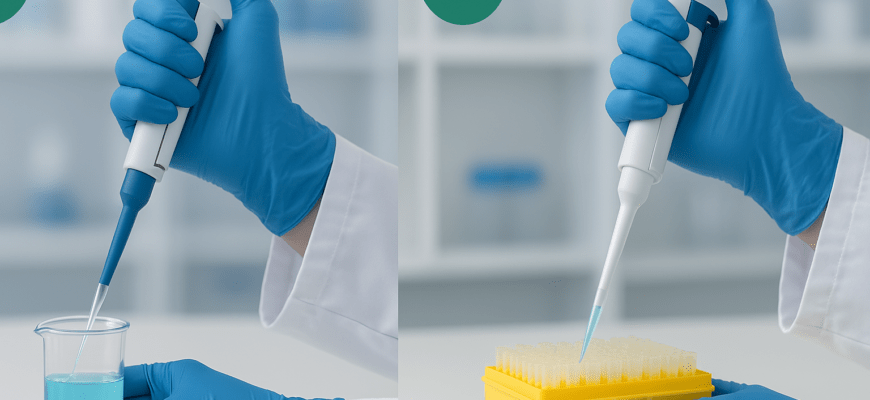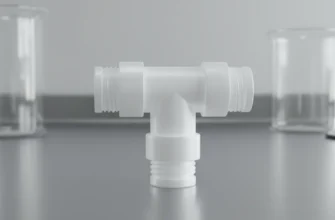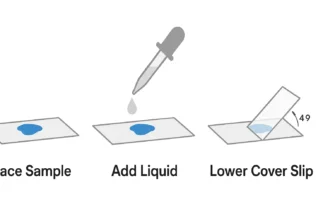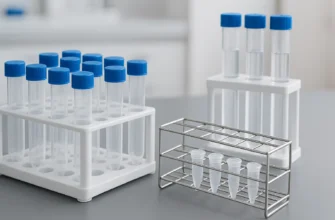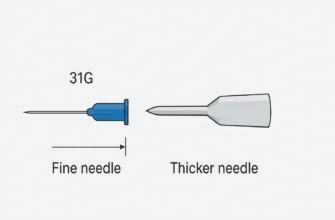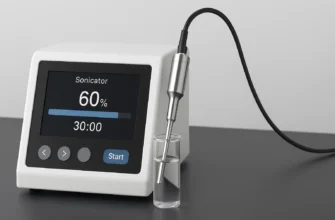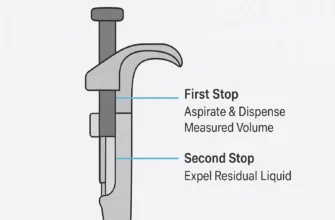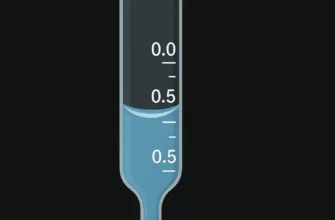Mastering Automatic Pipetting: Techniques for Safety, Accuracy, and Contamination Prevention
Automatic pipettes are cornerstone instruments in modern laboratories, enabling precise transfer of small liquid volumes essential for reliable experimental results. Mastering proper pipetting techniques is crucial not only for experimental accuracy but also for laboratory safety and prevention of sample contamination. This comprehensive guide explores best practices for automatic pipetting, covering everything from basic techniques to advanced considerations for various laboratory applications.
Understanding Automatic Pipettes
Types and Working Principles
Automatic pipettes can be categorized based on their control method and operational principles. According to their control method, we distinguish between manual and electronic automatic pipettes. Manual pipettes require thumb movement of the plunger using the control button, making the accuracy significantly dependent on the user’s skill and experience. Electronic pipettes utilize an electric motor to move the piston and offer programmable pipetting methods with adjustable speeds for different liquid types.
Based on operational principles, automatic pipettes primarily fall into two categories:
- Air Displacement Pipettes: The most common type, these pipettes use an air cushion between the piston and the liquid. They work well for routine aqueous solutions but may face challenges with volatile or viscous liquids.
- Positive Displacement Pipettes: These contain a piston that directly contacts the sample, eliminating air interface issues. They’re particularly useful for viscous, volatile, or hazardous liquids.
Components and Structure
A typical automatic pipette consists of:
- Body/barrel (sometimes called a pipetor)
- Plunger mechanism
- Volume adjustment system
- Tip ejector
- Disposable tip interface
- The pipetted liquid only comes into contact with the disposable tip, reducing cross-contamination risks.
Selecting the Right Pipette
Volume Range Considerations
For optimal accuracy, pipetting should be done at 35-100% of the pipette’s nominal volume. When pipetting 100 μL, for example, it’s better to use a 10-100 μL pipette rather than a 100-1000 μL model. This principle applies broadly: always choose the pipette with the smallest appropriate volume range for your needs.
As one Reddit user noted, “a 10 μL pipette demonstrates greater precision at 5 μL compared to a 20 μL pipette”. This principle helps ensure the highest possible accuracy for your measurements.
Matching Pipettes to Applications
Different liquids may require specific pipetting approaches:
- Aqueous solutions: Standard air displacement pipettes work well
- Viscous liquids (like glycerol or concentrated enzyme solutions): Consider positive displacement pipettes or reverse pipetting technique
- Volatile liquids: Positive displacement pipettes or pre-wetting techniques help minimize evaporation
- Hazardous materials: Filter tips and positive displacement systems offer additional protection
Proper Pipetting Techniques
Basic Technique
The fundamental pipetting process involves several critical steps:
-
Adjustment: Set the pipette to the desired volume
-
Tip attachment: Secure a proper tip firmly
-
Aspiration:
-
Press the plunger to the first stop
-
Place the tip in the solution (maintaining correct depth and angle)
-
Smoothly release the plunger
-
Wait approximately one second before removing the tip from the solution
-
-
Dispensing:
-
Touch the tip to the wall of the receiving vessel at a 45° angle
-
Press the plunger smoothly to the first stop
-
After a brief pause, press to the second stop to expel any remaining liquid
-
Withdraw the tip along the vessel wall
-
-
Tip ejection: Discard the tip using the ejector button
Proper Holding and Positioning
Hold the pipette vertically during aspiration to ensure accurate volume uptake. When the pipette tip is immersed at an angle too far from 90 degrees, overaspiration can occur due to deviations in liquid level from calibration standards. According to testing, at an immersion angle of 30 degrees from vertical, overaspiration of up to 0.7% can occur.
For dispensing, a slight angle (15-60°) is recommended to allow the liquid to flow smoothly down the vessel wall, preventing splashing and ensuring complete transfer.
Pre-wetting Technique
Pre-wetting involves aspirating and dispensing the target volume several times before the actual transfer. This process:
- Equilibrates the headspace of the pipette with the sample solvent
- Reduces evaporation of subsequent aliquots
- Increases consistency, especially for volatile liquids
ISO recommendations suggest pre-wetting at least five times, though many manufacturers recommend three cycles as sufficient for routine work.
Forward vs. Reverse Pipetting
Forward Pipetting (Standard Technique):
-
Press plunger to first stop
-
Aspirate liquid by releasing plunger
-
Dispense by pressing to first stop, then to second stop to expel remaining liquid
Reverse Pipetting (For Viscous or Volatile Liquids):
-
Press plunger to second stop
-
Aspirate liquid by releasing plunger
-
Dispense by pressing only to the first stop, leaving excess liquid in the tip
As one laboratory professional explained: “Unless you’re pipetting very volatile or viscous solutions, forward pipetting is more accurate/precise. And when you’re often pipetting viscous liquids, maybe invest in positive displacement pipettes or steppers”.
Ensuring Accuracy and Precision
Understanding Accuracy vs. Precision
Accuracy refers to how close a measurement is to the true value, while precision refers to the reproducibility of measurements. Both are critical for reliable laboratory results. The accuracy of any pipette depends on how well it’s calibrated.
Common Sources of Error
Several factors can compromise pipetting accuracy:
- Improper immersion depth: ASTM International recommends an immersion depth of 2-3 mm for volumes of 1-100 μL, 2-4 mm for 101-1000 μL, and 3-6 mm for 1.1-10 mL. For extremely small volumes (less than 1 μL), an immersion depth as small as 1 mm may be necessary.
-
Temperature fluctuations: Temperature affects liquid volume. For greatest accuracy, pipette at a constant temperature between 20° and 25°C.
-
Pipetting speed: Rapid aspiration or dispensing can create inaccuracies, especially with viscous liquids that may form air bubbles when drawn too quickly.
-
Inconsistent technique: Variation in pipetting angle, speed, or depth between measurements introduces error.
-
Using the wrong pipette range: As noted earlier, pipettes are most accurate within 35-100% of their maximum volume.
Verification Methods
A simple verification method involves weighing the dispensed liquid:
-
Tare an analytical balance with a vessel
-
Pipette your target volume of distilled water
-
Record the weight (1 mg = 1 μL at 20°C for pure water)
-
Repeat multiple times to check both accuracy and precision
Preventing Contamination
Types of Contamination
Three primary contamination types can occur during pipetting:
-
Pipette-to-sample contamination: Occurs when a contaminated pipette or tip contaminates a sample
-
Sample-to-pipette contamination: Happens when sample material enters the pipette body
-
Sample-to-sample contamination: Results from using the same tip for different samples
Effective Contamination Prevention
To minimize contamination risks:
- Use appropriate filter tips: These prevent aerosols from entering the pipette barrel.
-
Change tips between samples: This simple practice can reduce errors by up to 4%.
-
Adopt proper technique: Slow, controlled pipetting reduces aerosol formation, which is the primary contamination source in pipetting.
-
Regular cleaning: Routinely clean the external pipette surfaces with isopropyl alcohol.
-
Proper storage: Store pipettes vertically on stands rather than laying them on the bench. This prevents liquid from entering internal components, which could lead to corrosion.
-
Consider tip purity grades: Manufacturers offer tips with different purity levels, including those certified free of DNase, RNase, and endotoxins for sensitive applications.
Pipette Maintenance and Calibration
Calibration Frequency
Opinions on calibration frequency vary, but most laboratories follow these general guidelines:
- Minimum standard: At least once annually
- Ideal practice: Every three to six months
- GLP (Good Laboratory Practice) labs: Sometimes quarterly, especially for multichannel pipettes
- After incidents: Following drops or potential damage
- Based on usage: High-usage pipettes may need more frequent calibration
Simple Calibration Check
To check if your pipette needs calibration:
-
Pipette a set volume of water (preferably at middle and maximum range)
-
Weigh it on a calibrated analytical balance
-
Repeat several times and calculate the average
-
Compare results with manufacturer’s specifications
-
If deviation exceeds acceptable limits (typically 2-5%), professional calibration is needed
As one laboratory professional shared: “Check if your pipette needs calibration, don’t just send them in mindlessly. You only need to pipette 2 volumes of water to see if they’re in spec”.
Professional Calibration
Professional calibration typically involves:
-
Verification of current performance (“as found” state)
-
Adjustment if necessary
-
Final verification (“as left” state)
-
Documentation with traceability to standards
According to calibration experts, “Depending on how often pipettes are calibrated and how well they are maintained and used, about 5-30% of pipettes need adjusting. A pipette which is just within spec may be off a week later”.
Safety Considerations
Preventing Repetitive Strain Injury (RSI)
Repetitive pipetting can lead to hand and wrist injuries. To minimize RSI risk:
- Take regular breaks: The U.S. Occupational Safety and Health Administration (OSHA) recommends a 1- to 2-minute break for every 20 minutes of pipetting.
-
Use ergonomic pipettes: Modern pipettes are designed with ergonomics in mind. For example, single-channel pipettes with lightweight ergonomic designs (approximately 85g) can reduce effort and prevent fatigue during long work periods.
-
Consider electronic options: Electronic pipettes reduce the physical strain of repetitive plunger depression.
-
Automation for high-throughput work: For large sample sets, automated pipetting systems eliminate RSI risk entirely.
Safe Handling Practices
When working with hazardous materials:
-
Use filter tips to prevent aerosol contamination
-
Consider using positive displacement pipettes that eliminate air interfaces
-
Wear appropriate personal protective equipment
-
Follow institutional guidelines for specific materials
Advanced Pipetting Solutions
Multichannel Pipettes
Multichannel pipettes allow simultaneous transfer of multiple samples, offering:
- Increased throughput
- Improved consistency between wells
- Reduced fatigue from repetitive actions
- Visual confirmation of uniform liquid levels across all tips
As one laboratory professional noted: “Employing a multichannel pipette when dealing with numerous samples enhances accuracy significantly. This method allows you to visually confirm that the liquid level is uniform across all tips”.
Automated Pipetting Systems
Fully automated pipetting systems provide several key advantages:
- Time savings: Automated systems work continuously without fatigue or breaks needed by human operators.
-
Improved accuracy and precision: Elimination of human variability leads to more consistent results, with some systems offering precision of less than 10% CV at volumes as low as 1 μL.
-
Enhanced safety: Minimized user interaction reduces exposure to hazardous or infectious samples.
-
Increased reproducibility: Standardized pipetting parameters ensure consistent results across different runs and operators.
-
Detailed documentation: Many systems automatically log operations, enhancing traceability.
Troubleshooting Common Problems
Identifying Leaking Pipettes
A leaking pipette can be identified when:
- Liquid drips from the tip after aspiration
- The tip slowly empties when kept submerged in liquid after aspiration
Common causes include:
- Damaged or worn O-rings or seals
- Scratches on the tip holder where the tip grips
- Improperly fitted tips
- Internal contamination
When to Seek Professional Help
Consider professional service when:
- Calibration attempts fail to bring the pipette within specifications
- Physical damage is visible
- Leaking persists despite cleaning
- Inconsistent results occur despite proper technique
Conclusion
Mastering automatic pipetting techniques is essential for laboratory success. Proper selection, handling, and maintenance of pipettes significantly impact experimental outcomes. By following the guidelines outlined in this article—using appropriate technique, regularly verifying calibration, preventing contamination, and prioritizing safety—laboratory professionals can ensure reliable, accurate results while protecting both themselves and their samples.
Remember that developing good pipetting habits requires practice and attention to detail. Even small improvements in technique can lead to substantial enhancements in data quality and reproducibility. Whether you’re conducting routine sample transfers or executing precision-critical applications, these foundational skills will serve as the bedrock of successful laboratory work.

